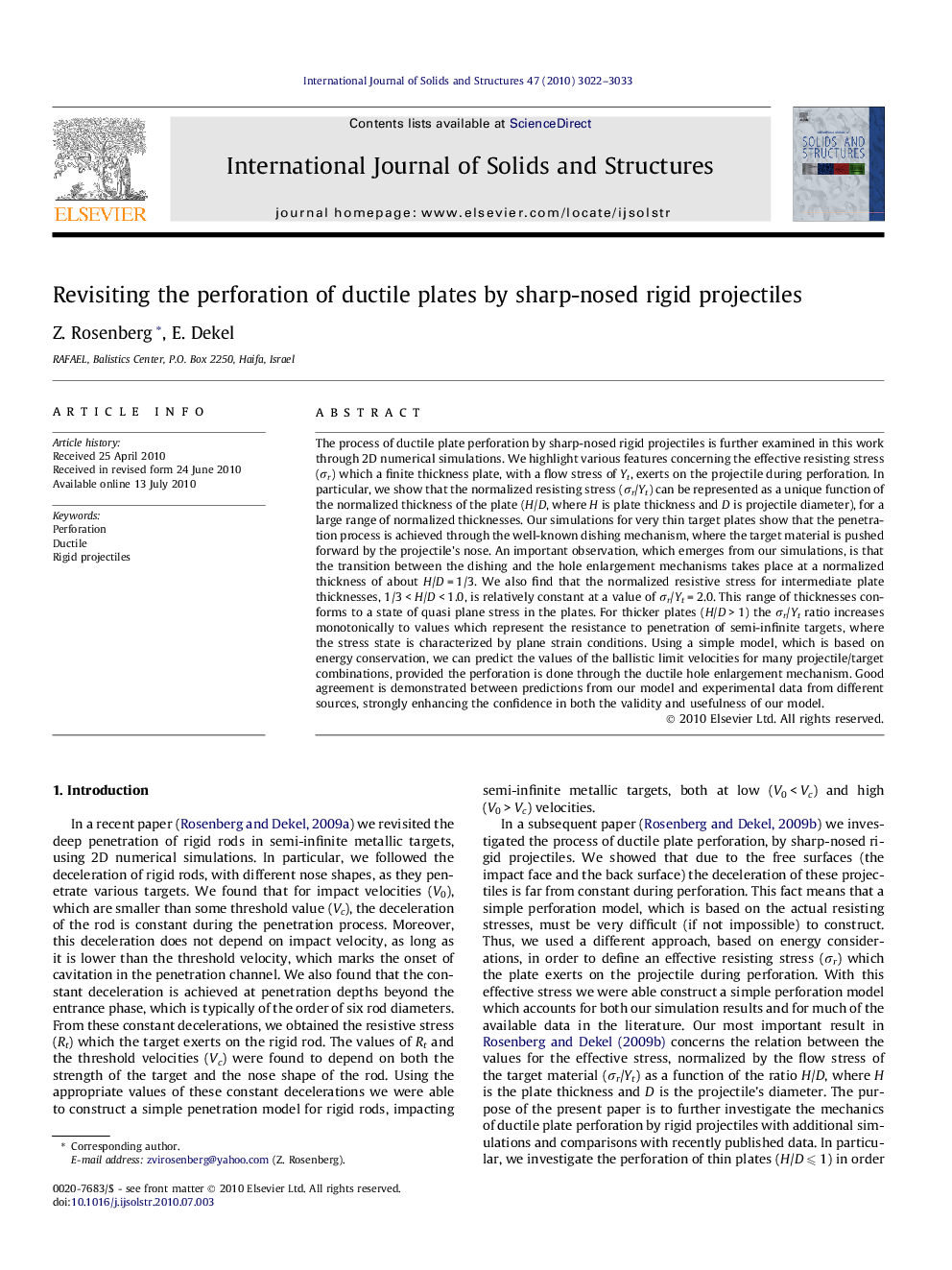| کد مقاله | کد نشریه | سال انتشار | مقاله انگلیسی | نسخه تمام متن |
|---|---|---|---|---|
| 278908 | 1430308 | 2010 | 12 صفحه PDF | دانلود رایگان |

The process of ductile plate perforation by sharp-nosed rigid projectiles is further examined in this work through 2D numerical simulations. We highlight various features concerning the effective resisting stress (σr) which a finite thickness plate, with a flow stress of Yt, exerts on the projectile during perforation. In particular, we show that the normalized resisting stress (σr/Yt) can be represented as a unique function of the normalized thickness of the plate (H/D, where H is plate thickness and D is projectile diameter), for a large range of normalized thicknesses. Our simulations for very thin target plates show that the penetration process is achieved through the well-known dishing mechanism, where the target material is pushed forward by the projectile’s nose. An important observation, which emerges from our simulations, is that the transition between the dishing and the hole enlargement mechanisms takes place at a normalized thickness of about H/D = 1/3. We also find that the normalized resistive stress for intermediate plate thicknesses, 1/3 < H/D < 1.0, is relatively constant at a value of σr/Yt = 2.0. This range of thicknesses conforms to a state of quasi plane stress in the plates. For thicker plates (H/D > 1) the σr/Yt ratio increases monotonically to values which represent the resistance to penetration of semi-infinite targets, where the stress state is characterized by plane strain conditions. Using a simple model, which is based on energy conservation, we can predict the values of the ballistic limit velocities for many projectile/target combinations, provided the perforation is done through the ductile hole enlargement mechanism. Good agreement is demonstrated between predictions from our model and experimental data from different sources, strongly enhancing the confidence in both the validity and usefulness of our model.
Journal: International Journal of Solids and Structures - Volume 47, Issues 22–23, November 2010, Pages 3022–3033